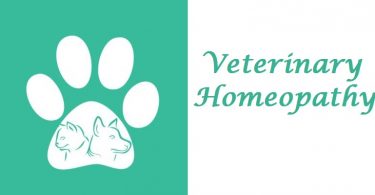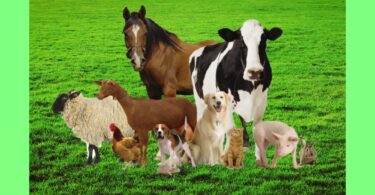Reprinted courtesy Levonne Kelly from her website
Somehow *Spotty slipped through the cracks. Uplifted (along with other dogs) from a property involved in dog fighting, she is in foster care with Tina and her husband Jim. Tina tells me that dog fighting generally involves dogs being crated, starved and then baited, often with cats or smaller dogs, and that this scenario does not usually end with the dogs being re-homed. Spotty got lucky.
First Consultation:
A 7 month old spayed female terrier cross (probable mix of Staffordshire, Bull and maybe Fox Terrier), Spotty presents with Demodex mange and behavioural problems that she has as a result of her rough start to life. Tina is to be her guardian until she is in a condition (physically, mentally, and emotionally) to be re-homed.
When she first came to Tina and Jim 5 weeks ago she was underweight, aggressive around food and bones, and nervous with children. She was seen by a vet straight away and put on a 6 – 8 week course of oral Ivermectin for the mange. She was also put on a course of antibiotics for her skin, and this was repeated when she had a red, smelly, infected left ear 3 weeks ago. She was spayed and vaccinated 2 weeks ago, and just this week was started on Prednil.
The mange is in patches and mainly on her head, back, and around her eyes, and also her creases and tummy. The hair loss has increased since her arrival, and the skin is weepy and very itchy, but not smelly. She is itchier now than when she first arrived. The skin gets red and raw when she is anxious or excited – this is an instant reaction which I witnessed while there, and easily seen on her mostly white coat. It is also worse if she gets wet in the rain, and from beef bones.
The central focus of the case, however, is the mental/emotional focus. If Spotty’s mental/emotional state does not improve significantly, she will not be able to be re-homed. Her behavioral problems have been caused by a history of abuse, and this is undoubtedly the aetiology for the mange as well. While the physical focus of mange is secondary, it is still very strong and most important that it is resolved, as a dog with mange cannot be re-homed either (as per the policy of the rescue organization involved).
Now, 5 weeks on, she is “great with the kids” though jealous of babies. She greeted me very excitedly, without aggression but with a certain tension or anxiety. She seems a very sweet dog. During my visit she was reprimanded at one point by Jim – she growled back, then took herself off to sit by the fire on her own, which is her usual reaction to reprimand.
She is very restless, and anxious about many things, such as tissue boxes, squeaky toys, blinds closing, the vacuum cleaner – all of which are most likely new to her. She is now going out at night to wee on her own, but didn’t previously – Tina thinks she is possibly scared of the dark.
Jim is the ‘boss’ of the house, while Tina is the ‘reassurer’. Spotty recognizes the 2 family cats as ‘house cats’ although needed reassurance at the initial meeting. She chases other cats. When she meets other dogs, she is not aggressive to larger ones, but is towards smaller ones, and seems unsure of them. She is starting to dominate the Labrador that visits often, with beginnings of aggression towards him.
Tina says “She was ‘fear aggressive’ when she first arrived, and took 3 weeks to improve. She used to ‘go’ you, growling and snarling – now you can see that she visibly holds herself back, she wants to be good. She is starting to ‘chill out’ now, and likes to snuggle with me. She will give toys in play, and when the baby is playing she will get her own toys and play alongside.” She does show possessive behavior at times, like bringing a bone close to you, then letting you know not to touch it, and once put her bone on Tina’s clothes, then ‘had a go’ at Tina when she went to move it.
She is ravenous and her diet is generally Tux puppy biscuits and Champ puppy canned food. She likes routine in food. She has large drinks, not so often. Bowel motions are normal, 3 times a day. She needs Tina’s reassurance to go out to wee but is getting better – still has the odd accident inside.
Prescription: Staphysagria 30c given twice daily for up to 5 days, with instructions to stop on any improvement or aggravation and report to me. Follow up in one month.
Staphisagria is often one of the first remedies that comes to mind in cases where there is a history of abuse, and it repertorised very well. When I think of Spotty I think of a sweet little dog who really wants to please, but a build-up of anger, anxiety and fear as the result of her past is just below the surface. Her guardian sees her ‘visibly holding it in’ in an effort to be good. This is the centre of the case. Homeopath and author Vicki Mathison describes Staphisagria as gentle, submissive and wanting to please but with underlying anger, often with a rage below the surface that can suddenly be expressed, and with mange a particular indication. Dr. M. L. Tyler quotes Hahnemann’s description “complaints that come from pent-up wrath: suppressed anger: suppressed feelings”. Don Hamilton (DVM) says “Indignation for past offences and repressed anger well up inside until they are released as irritability, rage, or physical disease. Any strong emotions and quarrels can worsen these patients”. All of these describe Spotty very well, and the particular characteristics of her skin are well-represented in Staphisagria – inflamed, weeping, itching mange made worse by emotional excitement and getting wet.
Follow-Up One Month Later:
Spotty is looking very well indeed! Her skin has cleared completely – there are no red patches at all and the hair has grown back very quickly. In fact it is quite hard to tell she ever had any skin problems at all. She is off all veterinary medication now and has not had any Prednil for 3 weeks. Her eyes are clear and bright. She still gets itchy now and again if she gets wet. There have been no relapses of the ear infection.
She has put on condition and is no longer ravenous, more a ‘grazer’ and will leave food when full. Tina notes that she now has an acute sense of smell, whereas previously she did not seem to, and wasn’t interested in sniffing etc.
Mentally she is a different dog. For the first few days after the remedy she was moody, but is now a very relaxed, chilled out dog, sprawled on the lounge floor. She still gets excited but in a much more relaxed way, without the anxious tension she displayed before. She goes outside at night now without any problem at all.
She is more relaxed around the baby too, but sometimes still challenges her own place in the pack, e.g. occasionally growls if the children walk past her food bowl. She has had the odd “wee accident” in Tina’s bedroom and this seems to be directly related to anxiety when Tina is away.
Spotty’s response to the remedy has been quick and quite spectacular! As expected with Hering’s direction of cure, the mental state was the first to shift, followed by a rapid and dramatic improvement in the skin. The plan therefore at this stage is to not give another remedy at this time, but wait and see if the last remaining symptoms such as “itchy when wet” and the mental/emotional issues (around place in the pack and anxiety when Tina is away) continue to improve. Spotty can look forward to finding her new home very soon!
Reflection:
This was such a rewarding case to work with, especially given this little dog’s history. I was pretty confident that by follow-up there would be some encouraging changes, but given the nature of the skin condition and the dog’s past abuse, I thought we would be in for several visits over a longer period. While this is possibly not the last I will see of Spotty, it is fantastic when you get such an amazing response to a remedy.
My one regret? Not getting before and after photographs – note to self!
First published on my own website www.animalhomeopathy.co.nz 27.03.15
*All names have been changed.
References:
Vicki Mathison “Homeopathic Remedy Pictures for Animals” Narayana Publishers 2011
Dr M L Tyler “Homoeopathic Drug Pictures” B Jain Publishers Ltd 2004
Don Hamilton DVM “Homeopathic Care for Cats & Dogs” North Atlantic Books 1999





